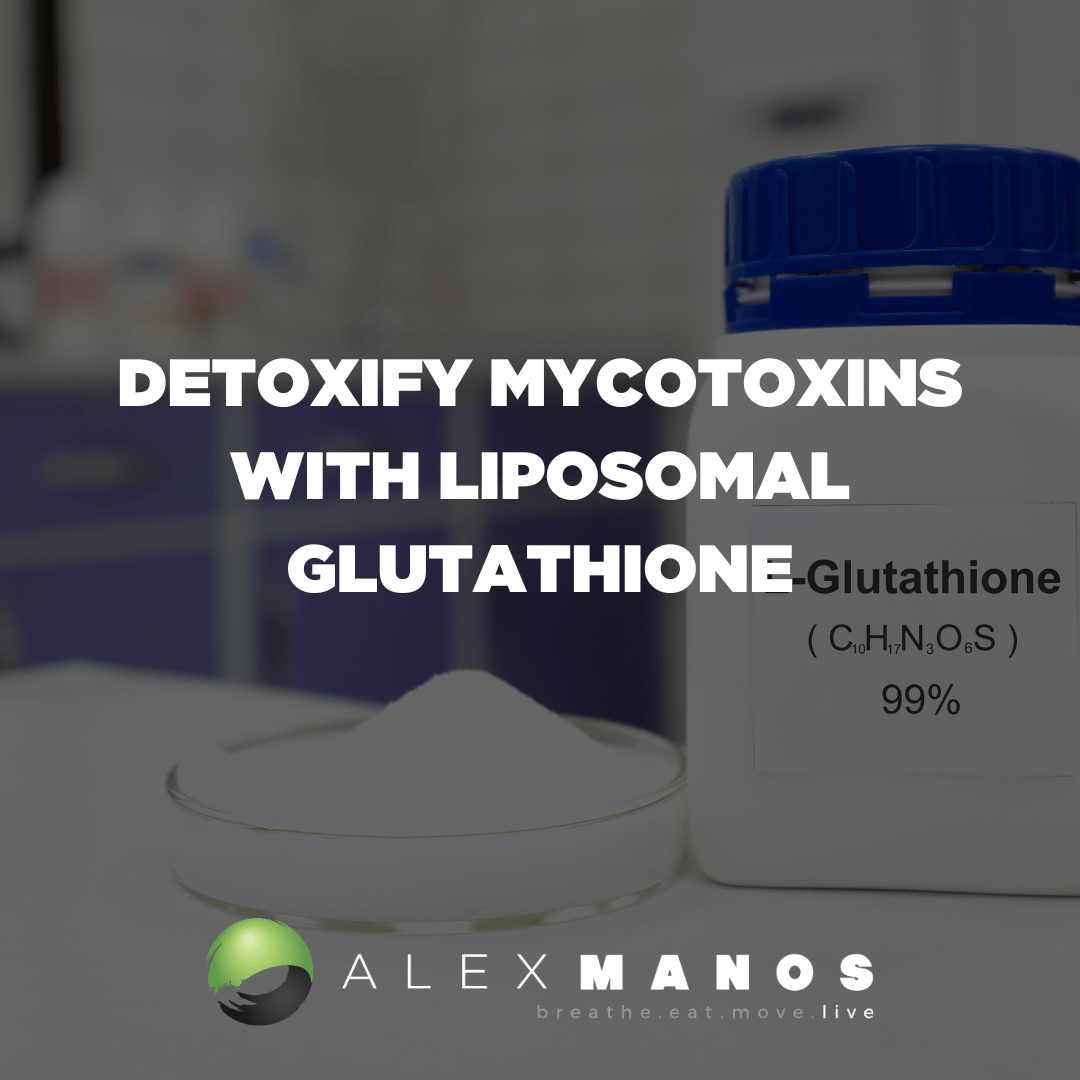Detoxify Mycotoxins With Liposomal Glutathione
You may also be interested in the section of my blog dedicated to mycotoxins, click here, in particular:
- Mycotoxin Testing What You Need To Know
- Can Mould And Mycotoxins Cause Chronic Fatigue Syndrome?
- Can Mould And Mycotoxins Cause Gut Problems Such As IBS?
What Is Glutathione?
Glutathione is comprised of three amino acids:
- L-glutamate
- L-cysteine
- Glycine
It is referred to as the body’s master antioxidant and it supports the detoxification of fat soluble toxins.
Many disease states including Alzheimer’s, Parkinson’s disease, and autism have been found to be associated with low glutathione levels and have been treated with glutathione precursors (N-acetyl cysteine and whey protein) or various forms of glutathione. One study found a correlation of low brain GSH levels with negative symptoms of schizophrenia (3).
Best Glutathione Supplement
A great liposomal glutathione product is available here.
How To Take Glutathione Effectively
Glutathione can be administered in an intravenous, nebulized, transdermal, oral liposomal, and nasal form.
The liposomal form is most frequently recommended.
An in vitro model of Parkinson’s disease in rats showed that liposomal glutathione was 100 times more potent than nonliposomal glutathione at replenishing intracellular glutathione.
Transdermal glutathione is also an effective delivery method and may be particularly desirable in children, who may be less compliant with other methods. A clinical trial of the use of transdermal glutathione in children with autism demonstrated that the treatment group showed significant increases in plasma-reduced glutathione but not whole blood glutathione. A good transdermal product can be found here.
It is best to use GSH in conjunction with sequestering agents as administration of GSH appears to allow the mobilization of toxins, including mycotoxins (3). Sequestering agents, more often referred to as binders include things like activated charcoal and bentonite clay. This is one of my preferred binders, click here. Dr. Nathan discusses uses specific binders for specific mycotoxins so you may want to speak with an experienced functional medicine practitioner before buying a product.
My Interview With Dr. Crista
How Do You Treat Mycotoxins?
Evidence for the role of oxidative stress in the pathophysiology of mycotoxin-related illness is increasing. The glutathione antioxidant and detoxification systems play a major role in the antioxidant function of cells. Exposure to mycotoxins in humans requires the production of glutathione on an “as needed” basis. Research suggests that mycotoxins can decrease the formation of glutathione due to decreased gene expression of the enzymes needed to form glutathione. Mycotoxin-related compromise of glutathione production can result in an excess of oxidative stress that leads to tissue damage and systemic illness (1).
Check out my blog ‘Mould Illness: A Functional Medicine Approach‘ for a comprehensive discussion on treatment.
An absolutely brilliant book is by Dr. Jill Crista available on Amazon here.
Summary (1):
- Evidence that oxidative stress (cellular damage) is a significant factor in mycotoxin-related illnesses is accumulating.
- The demonstration that the oxidative stress associated with mycotoxins can be related to direct suppression of genes which regulate glutathione function, may be due to the inability of mycotoxin-affected cells to adequately produce glutathione.
- Decreased function of the enzymes of glutathione production results in a microenvironment depleted of glutathione on a chronic basis, which, in humans, can lead to chronic conditions, including chronic asthma.
- A decrease in glutathione due to mycotoxin-related depletion may contribute to the range of conditions associated with mycotoxin accumulation.
- The lack of function of the enzymes of glutathione production in these conditions suggests that more efficient resolution of the effects of glutathione depletion may require supplementation.
References For ‘Detoxify Mould & Mycotoxins With Liposomal Glutathione’:
- Deficient glutathione in the pathophysiology of mycotoxin-related illness: click here.
- Hepatobiliary transport of glutathione and its role in cholestasis: click here.
- A review of the mechanism of injury and treatment approaches for illness resulting from exposure to water-damaged buildings, mold, and mycotoxins: click here.
Alex is a certified Functional Medicine Practitioner (IFMCP) and has a MSc in Personalised Nutrition. He is also a breathwork facilitator with a background in personal training and massage therapy. He also runs The Resiliency Program - a 24 week program aimed at building physical, mental, emotional, and spiritual resilience.



